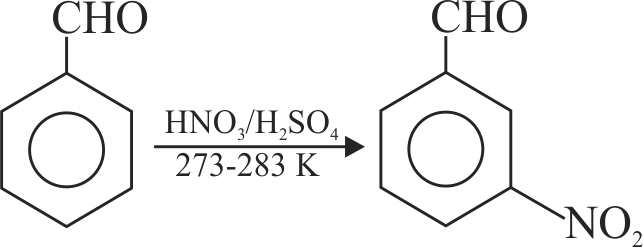323499
Addition of alcohols to aldehydes and ketones takes place in presence of dry \(\mathrm{HCl}\) gas because it
(i) Protonates the oxygen of the carbonyl compounds
(ii) Increase the electrophilicity of the carbonyl carbon
(iii) Removes the excess moisture from the reaction
(iv) Helps the reaction to move in the forward direction
323499
Addition of alcohols to aldehydes and ketones takes place in presence of dry \(\mathrm{HCl}\) gas because it
(i) Protonates the oxygen of the carbonyl compounds
(ii) Increase the electrophilicity of the carbonyl carbon
(iii) Removes the excess moisture from the reaction
(iv) Helps the reaction to move in the forward direction
323499
Addition of alcohols to aldehydes and ketones takes place in presence of dry \(\mathrm{HCl}\) gas because it
(i) Protonates the oxygen of the carbonyl compounds
(ii) Increase the electrophilicity of the carbonyl carbon
(iii) Removes the excess moisture from the reaction
(iv) Helps the reaction to move in the forward direction
323499
Addition of alcohols to aldehydes and ketones takes place in presence of dry \(\mathrm{HCl}\) gas because it
(i) Protonates the oxygen of the carbonyl compounds
(ii) Increase the electrophilicity of the carbonyl carbon
(iii) Removes the excess moisture from the reaction
(iv) Helps the reaction to move in the forward direction

